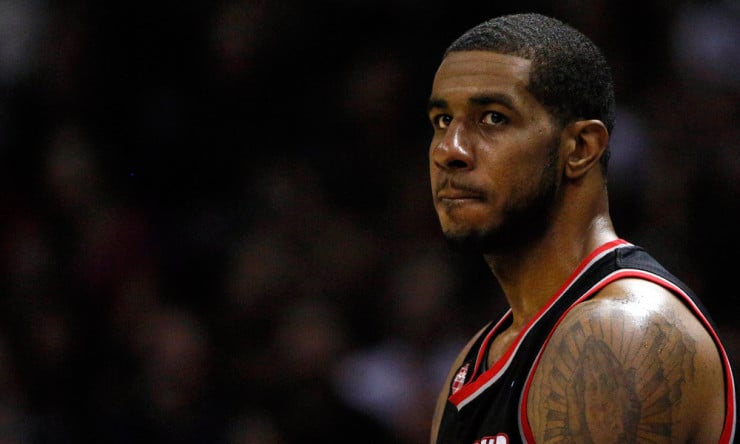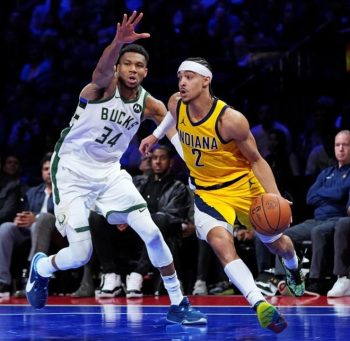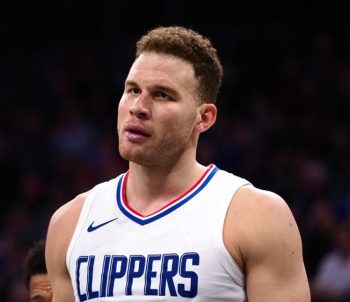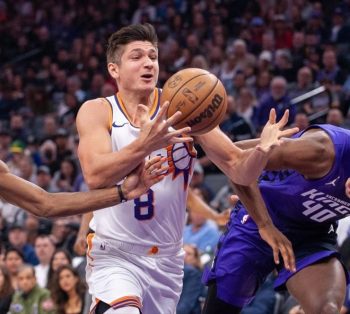NBA
NBA PM: Approaching The New NBA Economy

Alex Kennedy of Basketball Insiders and Brian Clark of CineSport discuss the latest rumors surrounding head coach Billy Donovan and the Oklahoma City Thunder.
Approaching The New NBA Economy
The NBA’s economy will undergo a seismic shift when the league’s new national television deal kicks in for the 2016-17 season.
The salary cap is projected to jump from $63.1 million this season, to $67.1 million for 2015-16 before leaping to $89 million in the summer of 2016.
The reverberations will be felt early, as this offseason’s free agents will need to decide between locking in long-term security versus waiting a year to cash in on the television windfall.
While the salary cap is expected to jump even higher for the 2017-18 season (to $108 million), both the players and owners are expected to opt out of the current Collective Bargaining Agreement – setting the stage for what could be another lockout.
In the meantime, the clock will start in just over two months when free agency gets underway.
Note that the following salaries are projections. The actual numbers won’t be determined until July of 2015 and 2016.
2015-16 Unrestricted Free Agents
The maximum salary a player can get is based on their years of service in the league. For the 2015-16 season, players with up to six years of experience project to max out at a starting salary of $15.7 million, seven to nine may make $18.8 million, while a veteran with 10 years or more could earn $22 million.
LeBron James will need to make a decision before the end of June on his player option with the Cleveland Cavaliers for next season.
James can opt in at $21.6 million or reenter free agency to sign a four-year, $94 million deal starting at $22 million.
Under normal circumstances, top free agents look to lock in as much money as they can for as long as possible.
If James is patient, re-signing with the Cavaliers this summer on another two-year deal, with a player option on the second season, would be the more-lucrative choice – enabling the two-time champion to then sign a four-year, $124 million contract in 2016.
James doesn’t have Bird rights with the Cavaliers after leaving the Miami HEAT as a free agent last summer. The numbers are even more significant for players eligible for five-year deals.
Los Angeles Clippers center DeAndre Jordan can re-sign for a middle-tier maximum contract at roughly $108 million, if the Clippers are willing to go that high.
If he’s a patient man, Jordan can choose to return on a one-year, $18.8 million deal – followed by a much richer $144 million pact the following summer.
The difference between 2015 and 2016 is more extreme for LaMarcus Aldridge of the Portland Trail Blazers, who is a middle-tier max player this summer, but top tier the following year.
If Aldridge takes one year with the Blazers at $18.8 million, instead of five years at $108 million, he’d be eligible or a stunning $168 million five-year deal the next summer.
That assumes Portland is willing to offer such a monstrous contract; they would have to weigh all of the factors surrounding Aldridge, including age (almost 30 years old) and injury risk.
Speculation abounds that Aldridge will explore other teams in free agency this summer. If he signs elsewhere, the power forward will forgo his Bird rights – reducing his potential payday to $80 million over four years.
Leaving for a one-year deal at $18.8 million would open the door for Aldridge to re-sign at $124 million contract over four.
A number of All-Stars and high-impact free agents will need to make similar decisions like Marc Gasol, Kevin Love (player option), Paul Millsap, Brook Lopez (player option), Al Jefferson (player option), Monta Ellis (player option), Greg Monroe, Roy Hibbert (player option) and Goran Dragic (player option) among others.
Some should certainly cash in now. How many top-tier players were injured this past season?
The compromise for many could be two-year deals with player opt-outs.
2015-16 Restricted Free Agents
This summer’s class of restricted free agents also have a lot to weigh with the new NBA economy, as do the teams looking to sign or re-sign them.
Is Draymond Green, of the Golden State Warriors, a max player? If the Warriors re-sign him at a starting salary of $15.7 million, he would make up to $16.9 million in the second year of his new deal.
Would Green then be considered a bargain, making about $4 million less than the $20.8 million maximum in 2016-17?
The math is similar for Kawhi Leonard and Jimmy Butler. There should be no economic reason their respective teams aren’t willing to pay them in full this summer.
Would Green, Leonard or Butler be willing to tempt fate with a one-season deal to take advantage of the higher cap a year later?
If other talents like Tobias Harris, Enes Kanter, Reggie Jackson, Brandon Knight, Tristan Thompson or Khris Middleton can cash in with big contracts, they should take the money and run – regardless of the ensuing cap jump.
Short deals may be more lucrative in the long run, but there’s a true benefit in a player striking while the iron is hot. Those same large offers may not be there in a year’s time.
Naturally for teams, there’s a greater incentive to locking in players before the salary cap makes its jump. The slew of restricted free agents, coming off of rookie-scale or minimum contracts, may be more-willing to cash in now than their unrestricted peers.
First-Round Extensions
New Orleans Pelicans forward Anthony Davis is eligible for an extension this summer. The team can offer Davis a maximum contract based on the 2016-17 salary cap.
If Davis is voted in next year as an All-Star starter for a second time, or is selected to the All-NBA first, second or third teams twice over the next two seasons, he will qualify for a middle-tier maximum salary despite his number of years in the league.
That number would reach nearly $144 million over five years as the Pelicans’ designated player.
Damian Lillard, Andre Drummond, Bradley Beal, Harrison Barnes, John Henson, Dion Waiters and Jonas Valanciunas, among others, will also be extension-eligible this summer.
None are likely to qualify for the higher-salary tier like Davis, but they could still sign four-year deals at $93 million or five-year deals at $120 million. Lillard has a shot still, if named to one of the three All-NBA teams.











